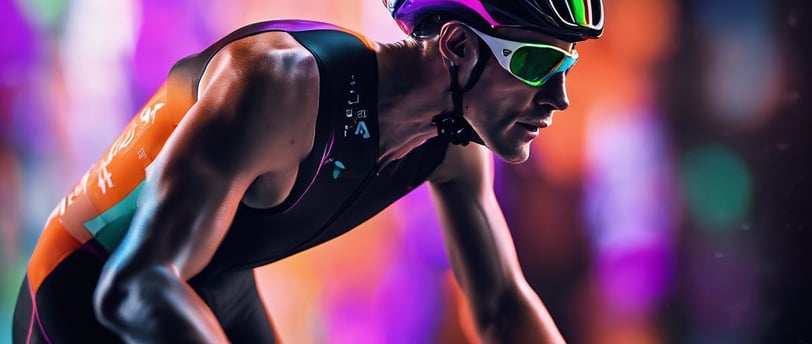Triathlon Meets Technology: How AI Revolutionizes Race Preparation and Strategy
Discover how AI is revolutionizing triathlon race preparation and strategy. From predictive analytics to real-time data, learn how technology optimizes performance and transforms athletes' approaches to competition.


AI in Triathlon: The Future of Training and Racing
Triathlon has always been the ultimate test of endurance, speed, and strategy. Athletes push their limits, training for months to shave seconds off their time. But in today’s world, the toughest competitor might not be another racer—it could be technology itself. Artificial intelligence (AI) is changing the game, giving athletes data-driven insights that redefine race preparation and strategy.
How AI is Transforming Triathlon
AI isn’t just a futuristic concept—it’s already making a real impact in the sports world, and triathlon is no exception. From training optimization to race-day tactics, AI is giving both amateur and elite athletes a powerful edge.
Smarter Training with AI
Imagine if you could predict the exact pace to maintain on the bike, adjust your training based on your body’s recovery, or optimize your performance using real-time data. AI-powered tools like TrainingPeaks and Whoop do just that, analyzing heart rate variability, power output, and sleep cycles to create highly personalized training plans. These insights help triathletes train smarter—not just harder—so they peak at the right moment.
Real-Time Race Strategy
Race-day decisions used to rely on instinct, but now AI-powered wearables can make those calls in real time. Smartwatches and bike computers track cadence, hydration levels, and energy output, offering live feedback to help you adjust your strategy on the fly. If your cadence drops mid-climb, AI can prompt you to make an adjustment, preventing burnout before the run.
Decoding the Course for a Competitive Edge
AI isn’t just about personal performance—it’s also about understanding the racecourse. Platforms like Best Bike Split use machine learning to analyze course elevation, wind patterns, and terrain, helping athletes determine the most efficient pacing strategies. For iconic races like Kona, where conditions are brutal, these insights can be the difference between a podium finish and just crossing the line.
Mastering the Mental Game
Triathlon isn’t just about physical endurance; mental toughness plays a huge role. AI-powered apps like Headspace and Calm use biofeedback to help athletes improve focus and stay composed under pressure. Some platforms even create AI-driven race simulations, allowing competitors to mentally rehearse different scenarios before they ever step onto the course.
The Future of AI in Triathlon
As AI technology advances, its role in triathlon will only grow. Imagine AI-guided swimming goggles that adjust your route in open water or VR race simulations that let you preview courses before race day. AI could also make high-level training strategies more accessible, helping amateur athletes benefit from the same tools used by the pros.
A Powerful Partnership
While AI is an incredible tool, it will never replace human grit, passion, and strategy. Triathlon is about more than just data—it’s about the balance between the human spirit and cutting-edge technology. The smartest athletes will embrace AI, not as a crutch, but as a tool to train harder, race smarter, and push boundaries like never before.
So, as you gear up for your next race, one question remains: Are you ready to race with AI by your side?
/ month


